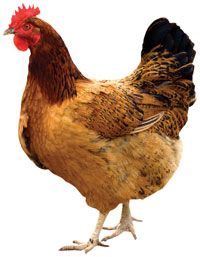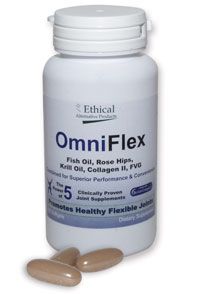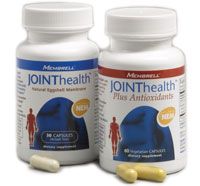Creature Comforts
Originally Published <a data-cke-saved-href="/sites/beta.nutritionaloutlook.com/files/articlelist.php?issueid=57" href="/sites/beta.nutritionaloutlook.com/files/articlelist.php?issueid=57" "="">NO January/February 2010
Originally Published NO January/February 2010

There is much money to be had in the joint health market-and not just by glucosamine and chondroitin, ingredients found in more than 70% of joint health products, according to market analyst Frost & Sullivan's (San Antonio, TX) 2009 U.S. bone and joint report.
Last fall, the European Food Safety Authority (EFSA) rejected a health claim submitted for glucosamine on the basis that it slows down/reduces cartilage regeneration and consequently reduces the risk of osteoarthritis. EFSA rejected the claim on the grounds that most of the submitted studies involved patients already with osteoarthritis (the claims were deemed inadequate for those without the condition). While some brush off EFSA's rejections, others speculate that they could hurt the market value for glucosamine, resulting in increased opportunities for other emerging ingredients in the joint health market.
Marketers may be looking at other joint health options, regardless. And Nutritional Outlook thinks that one feathered friend may be poised to make a move on the market.
Eggs
ESM Technologies LLC (ESM; Carthage, MO) believes it may have found the golden egg. The company first introduced its natural eggshell membrane (NEM), derived from chicken eggs, to the market in 2006. NEM is made up of glycosaminoglycans, including chondroitin and hyaluronic acid, but also contains collagen and other proteins.
In the last year alone, ESM conducted two human clinical trials that found significant reductions in pain and stiffness with NEM supplementation. One eight-week double-blind study of 69 patients, published in Clinical Rheumatology, found statistically significant responses to NEM supplementation versus placebo for 10, 30, and 60 days into the study. Pain and stiffness scores saw reductions of 16% and 13%, respectively, after just 10 days. Final measurements found stiffness scores to further reduce by 26%.
The second study, made up of one single-arm and one double-arm open-label study, found comparable joint improvements. Single-arm flexibility, range-of-motion, and general pain scores each saw significant improvements, with a 72.5% general pain reduction at 30 days. The double-arm study also found over 30% pain reduction with NEM supplementation at 30 days.
"These clinical studies show that NEM goes beyond just providing the building blocks for joints by effectively reducing joint pain and stiffness in as little as seven to ten days," says Kevin J. Ruff, PhD, director of scientific and regulatory affairs for ESM Technologies.
But beyond the science, and a need for larger, long-term studies, NEM carries an obvious distinction from powerhouse products like glucosamine that have already established mainstream customer appeal, in that its efficacy doesn't require big doses.
"The 500-mg daily dose suggested for NEM is amazing compared with having to take four to six pills if you take a combination product of glucosamine and chondroitin," says Ruff. "The daily dosage requirements for glucosamine and chondroitin are usually 1500 and 1200 mg, respectively, and for someone to only have to take a pill once a day, that's a serious benefit to the customer."
ESM caters to both human and animal markets, with several canine and equine joint care companies relying on NEM for their pet products. While the company's NEM specializes in joint support, both markets also tend towards sales of the company's eggshell calcium product (ESC) for bone support.
"There are some small joint benefits that you would get from ESC, but primarily it's intended to reduce bone loss," says Ruff. "Obviously, bones and joints are very intimately connected to each other, so, in an ideal situation, you would likely take the two in conjunction. Some of our customers put both in one formula."
But ESM's egg products are especially suited for a new market demand. Jeremy Moore, director of marketing and strategy development for Stratum Nutrition (which has a technology partnership with ESM), highlights ESM's unique sustainability story. "In the United States, there are over 600,000 metric tons of waste eggshells generated annually by egg breakers," says Moore. "The egg breakers' primary business is to sell egg whites and yolks into the food industry. Normally, the eggshells coming from breakers are landfilled or spread onto fields. Our partner, ESM Technologies, works with egg breakers to take those shells and separate the membrane component from calcium-rich shell component and convert them into NEM and ESC."
ESM is continuing research into the mechanism of action behind its natural eggshell membrane, in addition to planning for larger clinical studies in the near future. The company also received GMP certification from NSF International (Ann Arbor, MI) last fall.

Collagen
A recent issue of Arthritis Research & Therapy suggests that the bodies of chickens are as appetizing a market idea as their eggs. The journal published a Chinese study last December that found chicken collagen to be a safe and effective treatment for rheumatoid arthritis. The double-blind, multicenter study compared the effect of collagen extracted from chicken breast (CCII; 0.1 mg/day) against methotrexate (MTX; 10 mg/week), an FDA-approved drug for treatment of rheumatoid arthritis.
Various criteria found CCII to be beneficial in treating rheumatoid arthritis, with fewer and milder side effects reported from the CCII group. The large-scale study provides a nice platform for the future of collagen as a beneficial ingredient for joint health.
Frost & Sullivan's U.S. bone and joint report highlighted collagen as a clear emerging player in the joint health sector, and much of the globe can affirm this. Asia, Europe, and the United States are all seeing animal collagen as an emerging joint health product. The report lists InterHealth Nutraceuticals (Benicia, CA) and BioCell Technology LLC (Newport Beach, CA) as two of the major players in the collagen market. Each company supplies different forms of the ingredient.
Type II collagen, derived from chicken sternum cartilage, contains naturally occurring structural proteins and glycosaminoglycans (GAGs), including hyaluronic acid and chondroitin sulfate (which are standalone joint health products in their own right). The natural presence of these proteins and GAGs contribute to replenishing the content of structural components in articular cartilage so joints can function properly. BioCell vice president of scientific affairs Joosang Park, PhD, says the GAGs in the company's BioCell Collagen II are needed in joints as a "matrix filler" of the cartilage, allowing for proper lubrication of joints so that they may move smoothly-and, thus, without pain.

When it comes to choosing a type II collagen, two options are available: undenatured or denatured.
InterHealth Nutraceuticals' UC-II collagen product is a patented undenatured collagen. InterHealth CEO Paul Dijkstra says that undenatured type II collagen differs from denatured collagen in that it deactivates collagen-specific T cells, preventing the secretion of collagenase enzymes that break down joint cartilage. This form of type II collagen also carries the benefit of a low dosage, with only 40 mg suggested for efficacy and used in UC-II studies.
Regarding studies with the undenatured collagen, good news came out of the International Journal of Medical Sciences last October when a published study reported 40 mg of UC-II to be more effective in reducing WOMAC (an osteoarthritis index) pain scores on human patients than a combination of 1500 mg of glucosamine and 1200 mg of chondroitin. A 2008 study found similar success with UC-II versus glucosamine and chondroitin on horses.
InterHealth also notes that its collagen product has received GRAS status for food and beverages, and is an FDA-notified and -published new dietary ingredient. Within the last year, several UC-II products were launched throughout the globe.
BioCell's Collagen II is of the denatured, hydrolyzed type. The hydrolyzed processing of this collagen gives it a lower molecular weight to allow for increased absorption in the body, says Park.
Park claims that BioCell Collagen II has several other advantages over competitor products-one being its shown ability to inhibit hyaluronidase. "Hyaluronidases degrade hyaluronic acid, which contributes to aging processes in the connective tissues," says Park. "Given that hyaluronidase-mediated degradation of hyaluronic acid is implicated in aging and inflammation, BioCell Collagen II's ability of inhibiting hyaluronidase may have a profound implication in terms of aging processes that take place in the joints and the skin."
Chickens, it turns out, may have the full body of benefits that humans are looking for.
HHS announces restructuring plans to consolidate divisions and downsize workforce
Published: March 27th 2025 | Updated: March 27th 2025According to the announcement, the restructuring will save taxpayers $1.8 billion per year by reducing the workforce by 10,000 full-time employees and consolidating the department’s 28 divisions into 15 new divisions.





